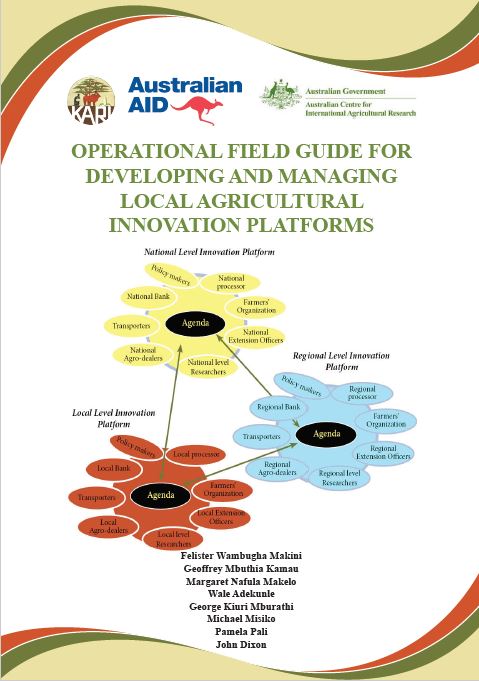- HomeHome
-
About ACIAR
- Our work
- Our people
-
Corporate information
- ACIAR Audit Committee
- Commission for International Agricultural Research
- Policy Advisory Council
- Agency reviews
- Executive remuneration disclosure
- Freedom of information (FOI)
- Gifts and benefits register
- Information publication scheme
- List of new agency files
- Contracts
- Legal services expenditure
- Privacy impact assessment register
- Commonwealth Child Safe Framework
- Benefits to Australia
- Careers
- 40 years of ACIAR
-
What we do
- Programs
- Cross-cutting areas
- Resources
- Where we work
-
Funding
- Research projects
- Fellowships
-
Scholarships
- John Allwright FellowshipScholarships to study in Australia for ACIAR partner country scientists to have Australian postgraduate qualifications
- ACIAR Pacific Agriculture Scholarships and Support and Climate Resilience Program
- Alumni Research Support Facility
- Publications
- News and Outreach
Co-publication
Operational field guide for developing and managing local agricultural Innovation Platforms
Date released
20 January 2015
ISBN
978-9966-30-004-1
Overview
The dynamic changes taking place in Africa, especially those caused by increasing population and climate change necessitate renewed efforts in food production, natural resources management and protection of the environment. In the past, Agricultural Research and Development agencies used diverse approaches to share ‘best practices’/’best bet options’ with the farming community but there has been often disappointing impact at farm level. The efforts made in the 1950s were predominantly linear technology transfer approaches, the farming systems perspective in the 1970s, and the farmer participatory approaches in the 1990s. All these have led to ‘islands of success’ observed around pilot testing sites instead of the expected widespread impact. Recently, the Agricultural Innovation Systems perspective has been embraced with a view to addressing some of the shortcomings of the previous approaches.
The Agricultural Innovation Systems perspective has a major point of departure from the earlier approaches which is the recognition that it gives to institutional challenges and multi-stakeholder engagement. It is useful because it provides science, technology and innovation organisations with an opportunity to develop appropriate innovations and to efficiently scale them up and/or out across the world. The perspective advocates for users and suppliers of knowledge and other services to interact from the outset to ensure innovation takes place within the value chains. The aim is to combine existing knowledge types (such as local, scientific and global) to generate technological, institutional and organisational innovations.
To operationalise this approach, agricultural innovation platforms (InPs) are critical. An innovation platform entails coming together of a critical mass of partners to share information, identify challenges and opportunities and agree on joint/reciprocal activities related to a common vision. Each actor in an InP needs to have clear role(s), appreciable contribution(s) and definite benefits.
The participation of the private sector in these processes is vital in the achievement of the Millennium Development Goals and various national goals and objectives.
Innovation platforms offer the prospect of vital to accelerate local development and there are many high-level materials about them that exist. However, there is no practical operational field guide which can be used by field level staff or any other interested parties to ensure good quality implementation. Without good quality implementation, the potential effectiveness of InP cannot be assessed, in which case learning about which InP methods work best will necessarily be limited. On behalf of all who have been involved in the preparation and production of this guide, we thank the Consultative Group on International Agricultural Research (CGIAR), Forum for Agricultural Research in Africa (FARA), CORAF/WECARD, CSIRO, the National Agricultural Research Systems (NARS) and the educational institutions from the 17 countries whose representatives shared their experiences on the setting up and management of InPs in a workshop facilitated by Dr Jurgen Hagmann of PICO Team. These experiences are further summarised in the chapters of this guide.
This field operational guide forms one important step in a larger series of activities conceptualized by John Dixon, ACIAR, Bruce Pengeley, CSIRO, Andy Hall, AusAID and George Mburathi, SIMLESA designed to build capacity and foster quality in InP establishment, management and monitoring. Ultimately, we hope to establish a mentoring platform in the region.
Finally, it is our sincere hope that all NARS and other institutions in Africa and beyond involved in working with Innovation platforms will find this guide valuable. We shall appreciate your feedback so that we continually update the guide with any emerging trends and information from the field.



